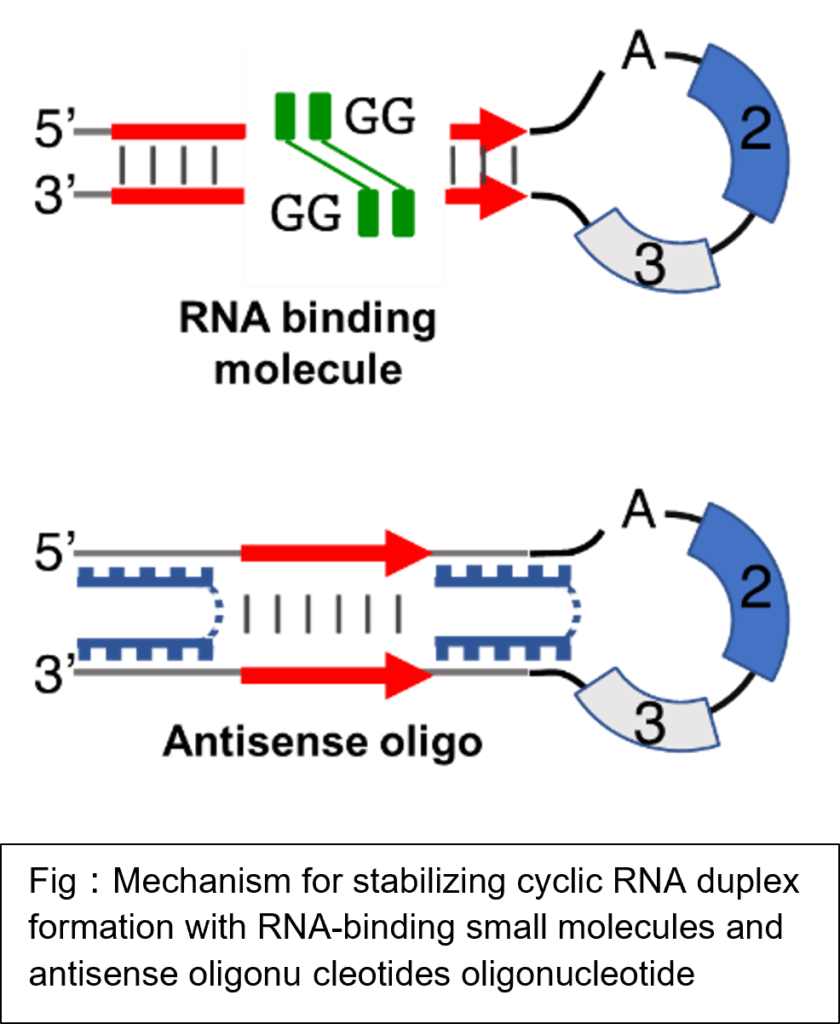Advantages
A pioneering treatment approach to in vivo upregulation of circular RNAs
Technology Overview & Background
This study homes in on backsplicing, a mechanism for circRNAs biosynthesis in vivo, and aimes at promoting circRNAs biosynthesis. Backsplicing process is facilitated by base pairing between reverse complementary matches (RCMs) in introns flanking the circularizing exon. Successful backsplicing necessitates RCMs form base pairs between themselves to bring the branch-point adenosine and the 5’ splice site of the downstream intron close together. Thereby, the researchers hypothesized for enhancing circRNAs biosynthesis by stabilizing double-strand formation between RCMs. Administration of RNA-binding molecules such as antisense oligonucleotides and small molecules to cells for stabilization resulted in dose-dependent enhancement of circRNA expression. This technology is a new therapeutic application of antisense oligonucleotides and nucleic acid-binding molecules in drug development targeting the enhanced expression of circRNA and is expected to lead to various future therapies.
Data
- We designed an antisense oligo targeting a specific site on circCHEK2 pre-mRNA and administered it to Hela cells, observing a concentration-dependent increase in circCHEK2.
- Administration of NCD to Hela cells transfected with an artificial pre-mRNA containing a binding site for the RNA-binding compound (NCD) led to a concentration-dependent increase (0.5-5 μM) in CircRNA. Conversely, no such increase was observed following administration of QCD, which does not bind to the recognition sequence.
Publications
L. Ni, T. Yamada, A. Murata, K. Nakatani, Chemical Communications. 2022, 58, 3629-3632.
L. Ni, T. Yamada, K. Nakatani, Scientific Reports, 2024, 14, 8096
Patent
- Applied (Unpublished)
Principal Investigator & Academic Institution
Dr. Takeshi YAMADA (Project Junior Associate Professor, TIDE center, Tokyo Medical and Dental University)
Expectations
TECH MANAGE CORP. is looking for a pharmaceutical company/start-up that is interested in the development of this novel therapeutic approach. We can also arrange a meeting with the PI of this invention. Please feel free to contact us with any requests you may have.
Project No. TT-04396



